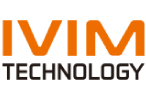Spectral Instruments Imaging manufactures instruments for preclinical optical (bioluminescent, fluorescent) and X-ray imaging.
Automated microscopy and Spatial Proteomics
Automated microscopy and image analysis
Discover
Related topics
The chicken chorioallantoic membrane as a low-cost, high-throughput model for cancer imaging

Apr 4, 2024
Here, we assessed the chicken chorioallantoic membrane (CAM) as an alternative to mice for preclinical cancer imaging...
A microthrombus-driven fixed-point cleaved nanosystem for preventing post-thrombolysis recurrence

Apr 3, 2024
A thrombin-responsive and fixed-point cleaved Fu@pep-CLipo was developed for highly efficient and precise thrombolysis...
Multiplexed tissue imaging using the Orion platform to reveal the Spatial Biology of Cancer

Mar 27, 2024
In this webinar Prof. Sandro Santagata, will reveal how Orion high-plex imaging and the use of this data, is valuable...

Mar 22, 2024
Mission Bio’s Tapestri Tool May Hold the Key to Informing Treatment Options for Multiple Myeloma.
A 19-color single-tube Full Spectrum Flow Cytometry for the detection of Acute Myeloid Leukemia

Mar 13, 2024
This recent publication in Cytometry Part A describes the development and comprehensive workflow of a single-tube,...
18F-labeled somatostatin analogs for somatostatin receptors (SSTRs) targeted PET imaging of NETs

Mar 11, 2024
A novel 18F-radiolabeled somatostatin analogue, [Al18F]NODA-MPAA-HTA, was synthesized and evaluated for positron...
Discover Yokogawa CellVoyager CQ1: Benchtop High-Content Analysis System

Mar 8, 2024
Unlike flow cytometers, the CellVoyager CQ1 confocal quantitative image cytometer does not require pretreatment such as...
Real-time and quantitative analysis of Macrophage Phagocytosis with RTCA eSight

Feb 23, 2024
The eSight is currently the only instrument that interrogates cell health and behavior using cellular
impedance...
Visualization of Tumor-Related Blood Vessels in Small Animals by Photoacoustic 3D Imaging System

Feb 21, 2024
In Vivo Label-Free Observation of Tumor-Related Blood Vessels in Small Animals Using a Newly Designed Photoacoustic 3D...
Therapeutic effects of mesenchymal stem cells in myocardial infarction

Feb 19, 2024
Intrapericardial hydrogel injection generates high cell retention and augments therapeutic effects of mesenchymal stem...

Jun 8, 2021
Amplification of chromosomal region 8p11-12 is a common genetic alteration that has been implicated in the aetiology of lung squamous cell carcinoma (LUSC)1-3. The FGFR1 gene is the main candidate driver of tumorigenesis within this region4. However, clinical trials evaluating FGFR1 inhibition as a targeted therapy have been unsuccessful5. Here we identify the histone H3 lysine 36 (H3K36) methyltransferase NSD3, the gene for which is located in the 8p11-12 amplicon, as a key regulator of LUSC tumorigenesis. In contrast to other 8p11-12 candidate LUSC drivers, increased expression of NSD3 correlated strongly with its gene amplification. Ablation of NSD3, but not of FGFR1, attenuated tumour growth and extended survival in a mouse model of LUSC. We identify an LUSC-associated variant NSD3(T1232A) that shows increased catalytic activity for dimethylation of H3K36 (H3K36me2) in vitro and in vivo. Structural dynamic analyses revealed that the T1232A substitution elicited localized mobility changes throughout the catalytic domain of NSD3 to relieve auto-inhibition and to increase accessibility of the H3 substrate.
Expression of NSD3(T1232A) in vivo accelerated tumorigenesis and decreased overall survival in mouse models of LUSC. Pathological generation of H3K36me2 by NSD3(T1232A) reprograms the chromatin landscape to promote oncogenic gene expression signatures. Furthermore, NSD3, in a manner dependent on its catalytic activity, promoted transformation in human tracheobronchial cells and growth of xenografted human LUSC cell lines with amplification of 8p11-12. Depletion of NSD3 in patient-derived xenografts from primary LUSCs containing NSD3 amplification or the NSD3(T1232A)-encoding variant attenuated neoplastic growth in mice. Finally, NSD3-regulated LUSC-derived xenografts were hypersensitive to bromodomain inhibition. Thus, our work identifies NSD3 as a principal 8p11-12 amplicon-associated oncogenic driver in LUSC, and suggests that NSD3-dependency renders LUSC therapeutically vulnerable to bromodomain inhibition.
Do you want to learn more? Read the whole article, or just ask us!
Related technologies: Fluorescence, luminescence, X-ray, radiographic imaging
Get more info
Brand profile
Spectral Instruments Imaging manufactures instruments for preclinical optical (bioluminescent, fluorescent) and X-ray imaging.
More info at:
https://spectralinvivo.com/